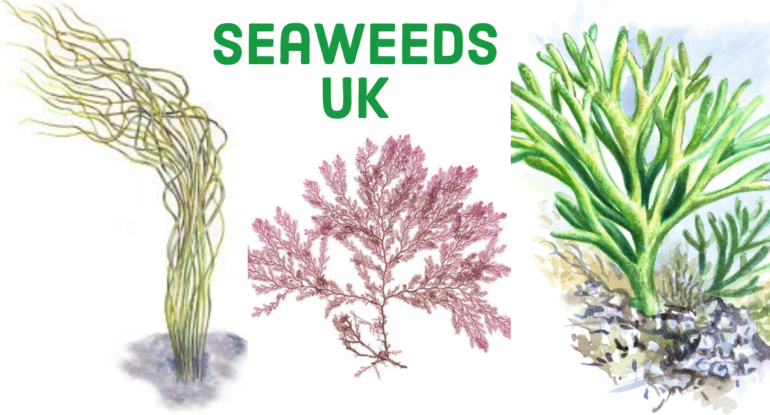Seaweeds UK Introduction
There are more than 650 species of seaweeds UK that are found in across the Britain and there are few species are important for studies. Out of them 6% of recognized species worldwide. They are extremely important to the ecosystem and are a source of food as well as shelter to a variety of other animals.
What are Seaweeds?
Seaweeds also called marine macroalgae. They are a group of plant like organisms that reside in coastal zones, and are usually connected to rock or any other substratum. They are classified into three taxonomic categories including red, brown and green. In general the species belong in the category that most closely matches their colour.
Where and When Seaweeds UK found
Seaweeds UK is abundant throughout the year. The shores that are protected tend to be an ideal habitat for a variety of species, since the majority of them cannot endure the pounding of waves in areas that are more exposed.
But, there are some species particularly adapted to life in exposed shores, therefore it is always worthwhile to take a look. In the same way, since many species require a sturdy base to anchor themselves to, shorelines that are rocky will have more seaweed than muddy or sandy shores.
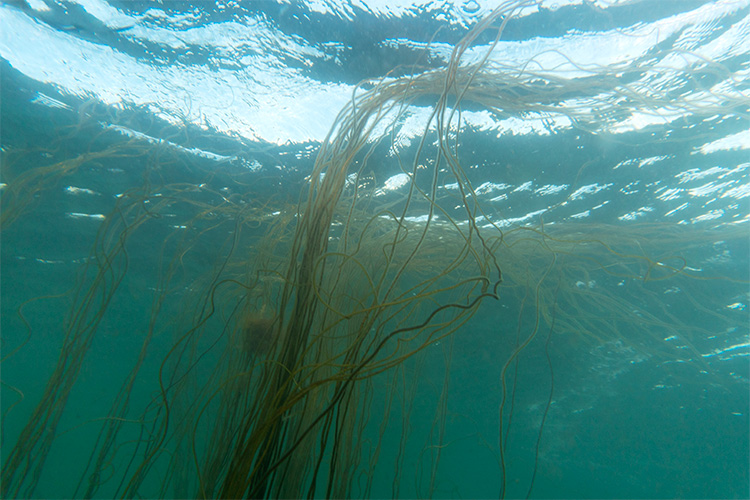
UK Seaweeds responsible for rising sea temperature
UK sea temperatures have risen 2°C in the past few years. When the scientist research about that so they find out UK Seaweeds risen the temperature. They play a great role for sea ecosystem.
Read in detail about Sea worms UK
Seaweed UK general distribution
Most of seaweeds UK are found all around the Britain and are fairly and easily located in the proper habitat. Seaweed are different from each other some are edible and some are deadly dangerous for even a human touch.
Seaweed UK Habitat
Habitat of seaweed UK are rocks, boulders or brackish estuaries, or outcrops of rock. The best places to look for them at the topography of the coastline. The largest diversity of edible plants is typically found along rocky, steeply shelving coasts as opposed to like, gently shelving sandy beaches.
Seaweeds UK Reproduction
Seaweeds UK have similar to plants, marine algae also have distinct life-cycles. They have times of high expansion as well as reproduction and the dormancy phase. The different species follow their own patterns, however, generally between January and May, are the ideal times to collect the majority of seaweed for the pot.
Sea weed Medicinal and Nutritional Benefits
Seaweed UK have high iodine content helps support the thyroid’s health.
The thyroid gland is located in the neck which helps create and control hormones. If your thyroid is not functioning properly, (underactive) thyroid could cause a range of symptoms, including muscles weakening, fatigue in depression, high cholesterol as well as a higher risk of ailments and weight gain.
Read in detail about UK Jellyfish
Seaweed have high levels of vitamins C and A
As well as an excellent source in calcium (higher than broccoli). Particularly, red seaweeds can be beneficial in treating osteoarthritis.
Sea weeds UK a potent source of antioxidants
Seaweed also help prevent inflammation and helps the body fight a myriad of illnesses, including cancer, arthritis, asthma, celiac disease depression and weight gain.
The high levels of Soluble fibres in Seaweeds which aids in digest.
Seaweed fibre turns into a gel inside your gut. It slows the digestion process and preventing the absorption of cholesterol and sugars.
Edible seaweeds UK
1.Pepper dulse
2. Laver
3. Sea lettuce
4. Dumont’s tubular weed
5. Carrageen
6. Sea Spaghetti
7. Gutweed
Edible seaweed guide
Rinse seaweed UK thoroughly in seawater after you have picked them up (some of the varieties that retain water will likely to hold some sand) However, you should not to rinse them in fresh water until prepared to use them to dry them (if they are dry at all) because this could decrease their salinity, and consequently their ability to keep.
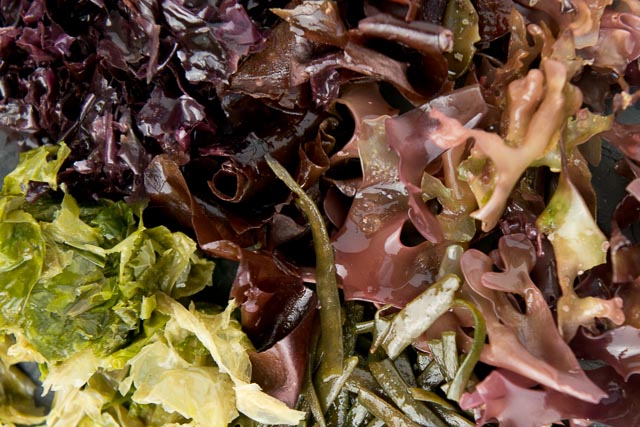
The majority Seaweeds UK can be (unsurprisingly) salty. You should make allowances for this when you are seasoning. They are a great substitute for table salt, and they can even fulfil the role of pepper!
Seaweeds UK identification chart
Seaweeds UK are divided into three taxonomic groups: brown, red and green. They have different complex structural and biochemical features.
Read also: Sea Birds UK
Brown seaweeds UK
| Brown Seaweeds UK | Scientific name | Length | Distribution |
| Knotted wrack | Ascophylum nodosum | up to 2 metres in length | This seaweeds UK found on the mid-shore on sheltered rocky coasts |
| Spiral wrack | Fucus spiralis | grows up to 40cm | This seaweeds UK found high on the rocky shore, just below the high-water mark. |
| Serrated wrack | Fucus serratus | 50 to 80cm in length | This brown seaweeds UK found on sheltered and semi-exposed rocky shores just above the low water mark. |
| Oarweed | Laminaria digitata | up to 2 metres in length | They grows in dense beds in the lower and shallow zones of sea water. |
| Sugar kelp | Saccharina latissimi | up to 5 metres in length. | This Sugar kelp seaweeds found on the lower shore and in deep rock pools. |
1. Knotted wrack Brown Seaweeds UK
The Brown seaweeds UK Knotted wrack also known as egg wrack. The seaweed is yellow-brown and has long fronds that can reach 2 metres in length. Large air bladders with single air sacs are visible in regular intervals throughout the length. The species is usually found in the mid-shore of coastal rocky shores.
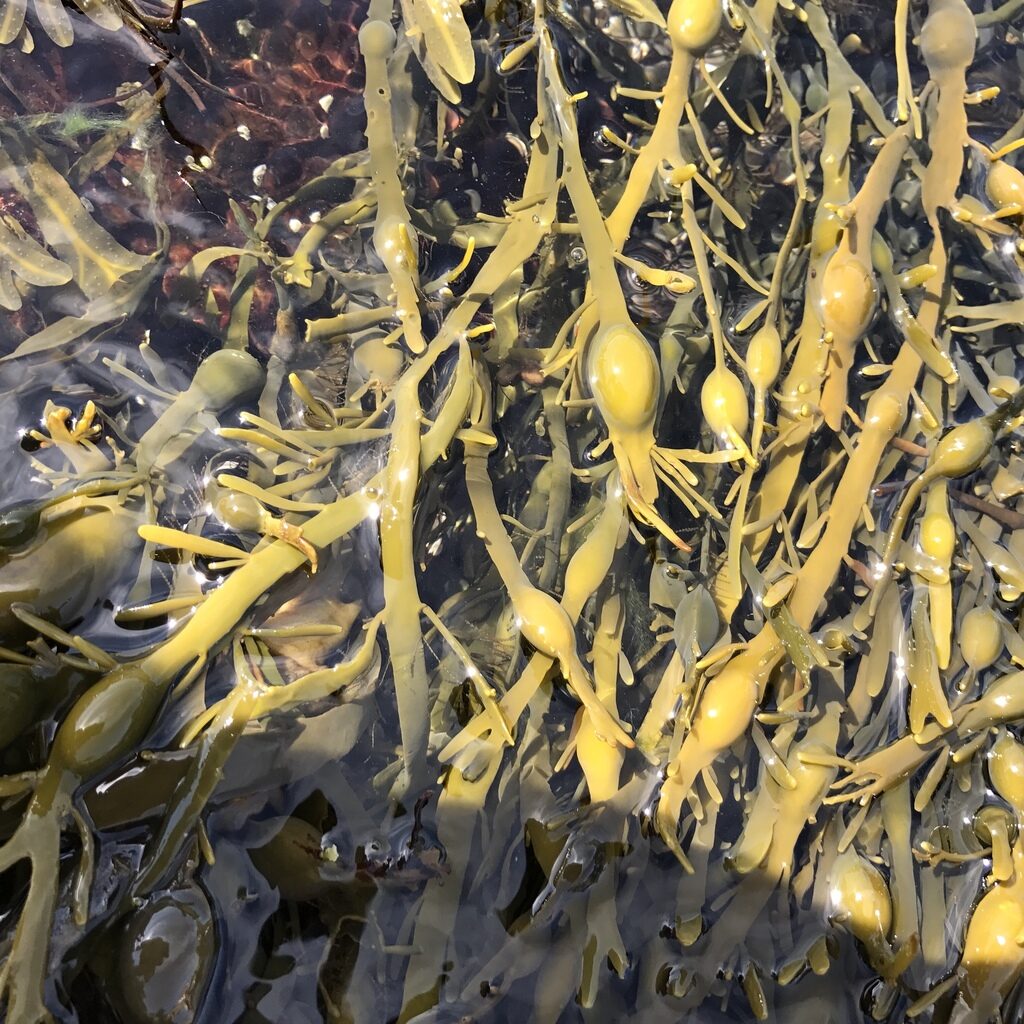
2. Seaweeds UK Spiral wrack
The brown seaweeds UK also known as Twisted Wrack .They are generally pale olive-brown in color and c up to 40 centimetres long. As they mature, fronds looks yellowish, swollen tips. They are located high shore of the rocky close to the mark of high-water.
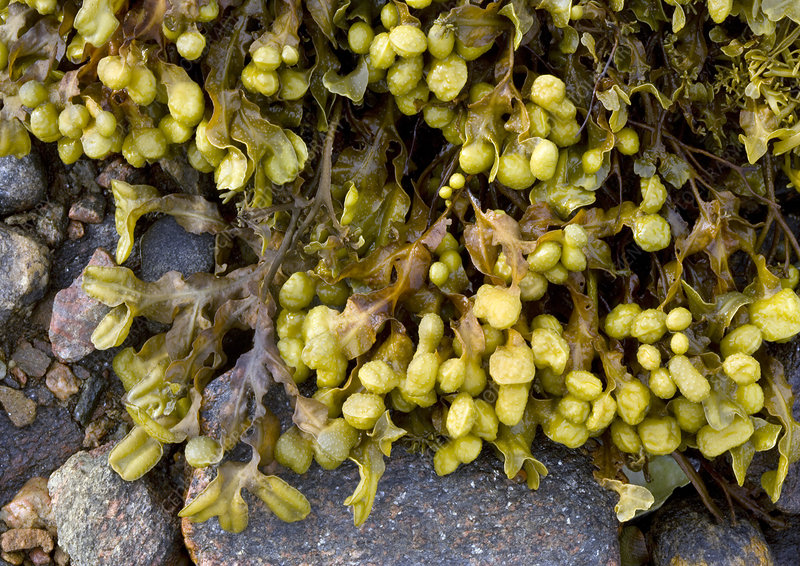
3. Serrated Wrack Brown Seaweeds UK
The Serrated wrack seaweeds UK also known as Tooth Wrack and Saw Wrack. This seaweed produces fronds with branches between 50 and 80cm long. They found in semi-exposed and sheltered sandy shores.
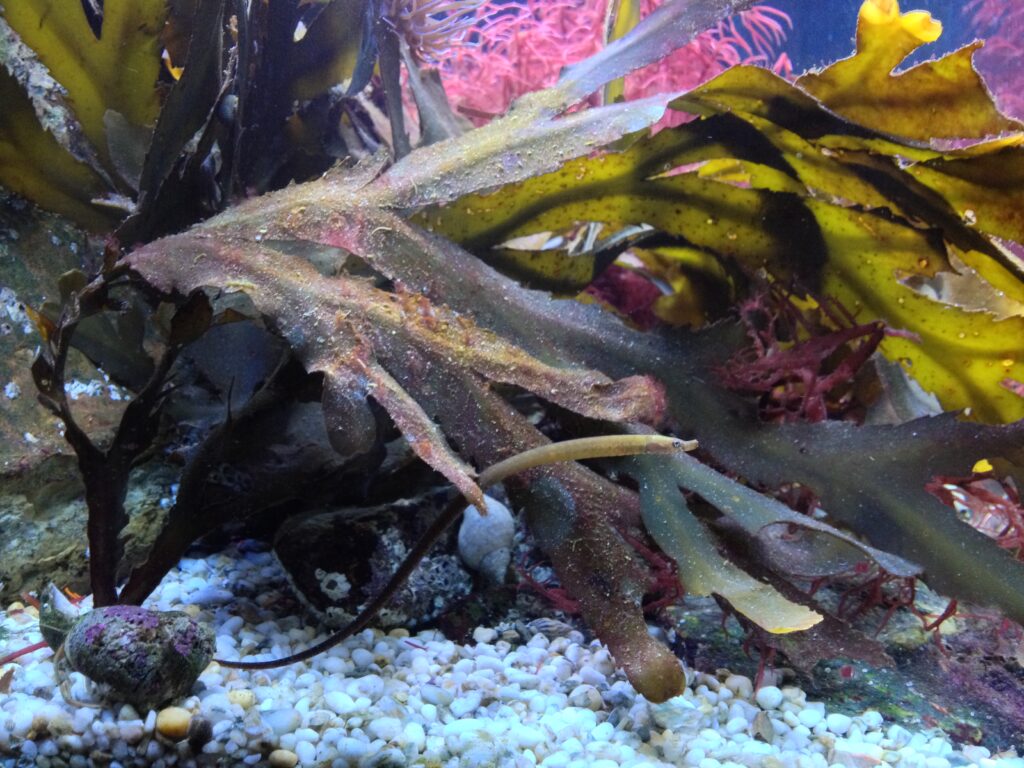
4. The seaweeds UK Oarweed
The seaweeds UK Oarweed has dark brown-green fronds which can be at least two metres in length. They are divided into long, finger-like blades. The species is found in thick beds in the lower intertidal as well as the subtidal shallow zones.
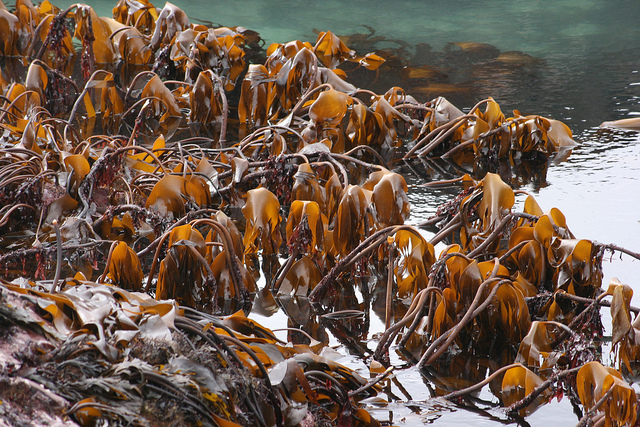
5. Sugar kelp seaweeds UK
The seaweeds UK sugar kelp also known as sea belt. They are are yellow-brown in colour and grow up to 5 meters long. They found in lower shore and in deep rock pools. Mostly found in 30 meters of depth on sea water.

Green seaweeds UK
| Green Seaweeds UK | Scientific name | Length | Distribution |
| Sea lettuce | Ulva lactua | 25cm in length and 30cm in width | This green lettuce seaweeds UK found to attached to rocks or floating in rock pools |
| Gutweed | Ulva intestinalis | grows up to 40cm in length | This seaweeds UK found in rockpools and on sand or mud |
1. Sea lettuce green seaweeds UK
They are light green sheet look like lettuce that’s why they called sea lettuce. Sea lettuce seaweeds UK are up to 20 cm long. Mostly they are attached to rocks and floppy rocks.
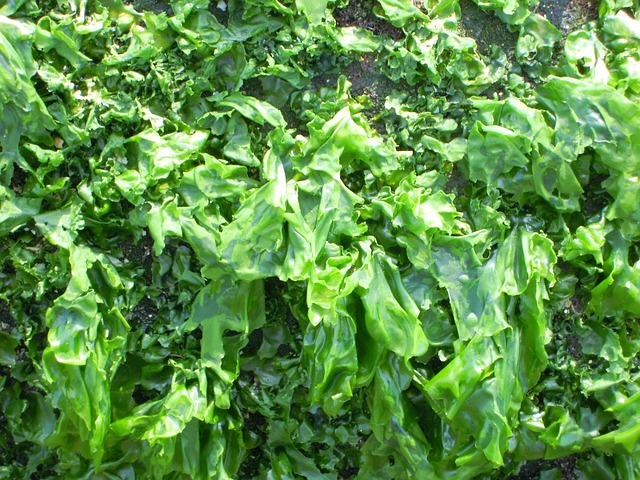
2. Gutweed green UK seaweed
This seaweeds UK also known as grass kelp. The word Gutweed comes from Latin words means mammals intestine. Because there shape is look like that. They are Bright green and grows up to 40cm in length. This species found in rock , sand and mud.
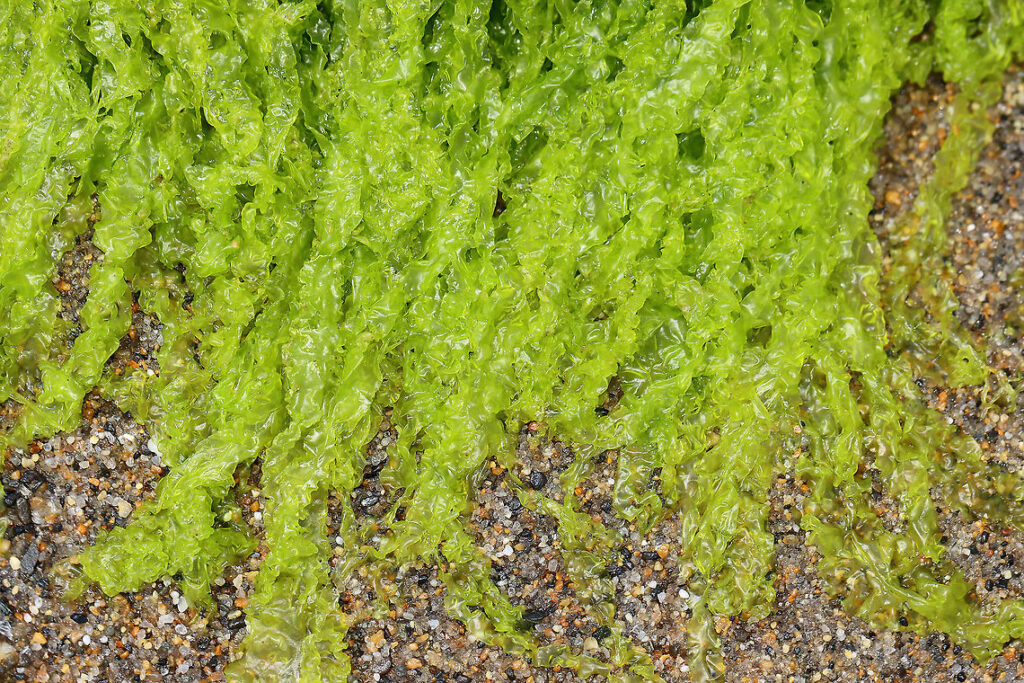
Red seaweeds UK
| Red Seaweeds UK | Scientific name | Length | Distribution |
| Carrageen | Chondrus crispus | up to 2 meters and submerge together | They found in Rocky shores |
| Purple laver | Porphyra umbilicalis | up to 2 metres in length | They found in the mid to upper shore |
1. Carrageen Red seaweed
This seaweed UK also known as Irish moss. They are Dark reddish-purple in the form of branches. This seaweeds turns green when exposure to sunlight. Mostly they found in rocky shores and muddy sea waters.
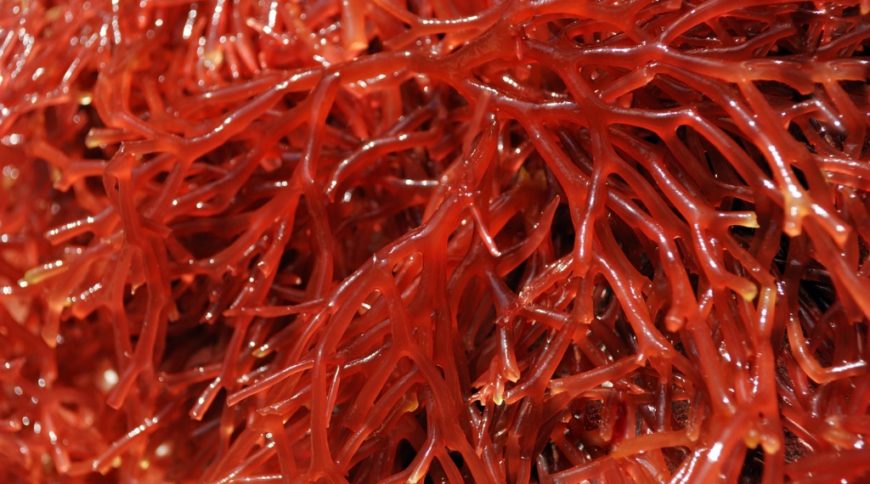
2. Purple laver Red seaweed
Purple Laver seaweed is Olive to purple-brown in colour grow up to 2 meters in length. Mostly found in upper shores. This species are not very common rarely found in seawater.

Seaweeds UK Conclusion
The sea is becoming acidic because it absorbs greater quantities of carbon dioxide from our atmosphere. A lot of marine species such as seaweeds UK struggle to develop in this environment.
Seaweeds are among the major species of plant-like organisms found on sandy shores. They can also be found on muddy and sandy shores in particular areas with concrete or wood structures. Seaweeds are algae which are not plants. As opposed to plants, seaweeds don’t have roots, stems , or leaves.
Most seaweeds UK require something to attach to, which is why they tend to appear on the rocky, protected shores, rather than on muddy or sandy substrates.
Seaweed UK FAQs
Q1. Are there all seaweeds UK are edible?
Not all seaweeds UK are edible some of them like laver ,Carragheen are edible but has to be proper wash with fresh water before cook.
Q2. What are Seaweeds?
The seaweeds are group of plank like structure live in coastal zone and deep oceanic sea and some time attached with rocks in the sea.
Q3. How many types of seaweeds UK are found in the sea?
There are around 40 types of species are found in the sea. Among them Some are edible and some are deadly dangerous.
Q4. UK Seaweeds are responsible for rising sea temperature is that true?
Yes that’s true scientifically proved by the scientist when they researched on seaweeds UK species.
Q5. Seaweed UK Gutweed are edible for human?
Yes Gutweed seaweeds species are edible.

